Manhole cover testing machines are essential in the modern era when technology has advanced all over the globe. Every day, people use manholes for sewage, and the covers are used for protecting them. There are a lot of different things people need to pay attention to while manhole covers are used for weighing loads, covering or protecting us and population control, significantly the structure needs to withstand public load. However, a number of things control the effectiveness of these machines such as design, operation, technology as well as standards. This article focuses on the performance of a given machine to test the manhole cover, stressing its precision and operational performance at best. After reading this, you will be informed about all the bits and pieces of this basic gear and its work on controlling infrastructure safety standards.
What Are the Key Factors in Manhole Cover Testing?
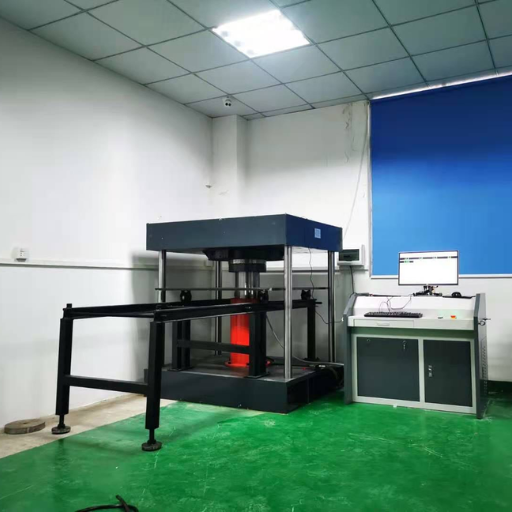
The focus of manhole cover testing prioritizes public safety along with long term durability and compliance with regulations. They include:
- Load Bearing Strength: Each manhole cover should be able to withstand vehicular traffic including heavy vehicles as per regulation.
- Material Specification: The manhole cover’s material composition must be assessed for its ability to resist corrosion, wear, and environmental degradation.
- Dimensional Accuracy: Cover dimensions must be within tolerances to ensure intended alignment and operational effectiveness.
- Impact Resistance: The capability to sustain acute and extensive forces is essential in avoiding fractures or damages.
- Surface Finish: Non-slip surfaces that are smooth and safe minimize risks of accidents for both vehicles and people walking.
These assessments confirm performance consistency, durability, and compliance with safety standards for public works.
How Does Detection Impact Testing Outcomes?
Detection is critical to the accuracy and confidence of the test results because Modern high-accuracy detection technologies, including high-resolution sensors and automated monitoring systems, allow tests to pinpoint breaches or undesired changes in the test structures, as well as irregularities in materials with a greater level of precision. With these technologies, the accuracy of capturing real-time data improves. Engineers can test stress points, foresee failures, and design empirically instead of conjecturing. Moreover, machine learning technologies have been applied to detection systems for predictive analysis, thereby reducing safety and performance compliance breaches. When used with high-accuracy detection systems, stringent test protocols ensure complete compliance. Integrating modern testing techniques enhances industrial infrastructure reliability, transparency, efficacy, and adoption confidence.
What Role Do Underground Utilities Play?
Hidden utilities are often taken for granted in today’s world—telephones, water, electricity, natural gas, sewage services all depend on these utilities. Having them placed underground gives these utilities a chance to minimize the effects of the environment, maximize land usage, and improve reliability in service delivery. With the use of modern materials and building techniques, there is a minimum risk of corrosion, damage, and interference with underground utilities, prolonging their life.
Underground utilities have become increasingly significant in the utility industry due to urbanization. For instance, fiber optic cables have become staples in high speed communication devices due to a drastic increase in data transfer requests. Additionally, undergrounds corridors can help facilitate smart grid systems aimed at centralizing energy distribution because they decrease the loss of energy, optimize resource consumption, and reduce energy waste. It is clear that these concealed utilities are vital to improving infrastructure and services provided to the population, without regard to whether they live in urban or rural regions.
How Does Road Surface Condition Affect Testing?
The condition of the road affects the accuracy and reliability of tests in civil engineering and automotive engineering. Pavement irregularities like cracks and potholes affect the testing of materials, their durability, load-vibrational analyses, among other things. These conditions also alter the vehicle’s dynamics during automotive testing and influence tire, brake, and suspension systems performance.
Working on a rough road surface adds additional uncontrolled variables, which adds to the challenge of interpreting results. For example, rough and wet pavements can exaggerate tire friction and wear processes, whereas calm wet smooth surfaces can alter traction and braking efficiency test results. The newest methods focus on accuracy by integrating real-life road variability using instrumented road sections and simulation tools. Engineers gathering data on the effect of surface conditions refine the tests and work on building dependable infrastructures and systems that boost safety and performance.
How Is Road Manhole Cover Detection Performed?
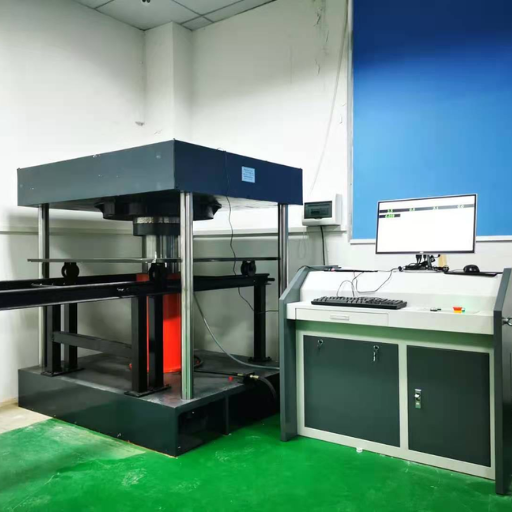
The methods used for detecting and identifying road manhole covers include imaging systems as well as different algorithms. Some methods employ cameras and LiDAR (Light Detection and Ranging) sensors fixed to vehicles to take images or collect 3D data of the roadway. The system is designed to locate manhole covers by examining different patterns, shapes, and spatial relations. With today’s technology, machine learning models are also incorporated to make detection more efficient, and model accuracy improves by training it on thousands of road images. This ensures that the inspections and maintenance activities done are effective and accurate in reducing risks for the drivers and the infrastructure as a whole.
What Technologies Are Used for Detection and Classification?
Such covers are found within a sophisticated marriage of technologies which allow covers to be identified and classified. LiDAR also makes use of high-resolution imaging by capturing three-dimensional data. LiDAR, for instance, can measure distances as well as how far objects can be positioned at different heights and angles making it possible to capture spatial information. Furthermore, multispectral and hyperspectral imaging systems enhance imaging by collecting data outside the visible spectrum which aids significantly in recognizing materials and differentiating features.
Machine learning and deep learning techniques are vital to the processes as well. For instance, Convolutional Neural Networks (CNNs) are capable of recognizing and processing images of great complexity and are therefore widely used for image recognition. This model processes images of roads and determines the critical features necessary to identify and evaluate the condition of manhole covers. Moreover, SVMs and Random Forests are used to classify entities based on certain specified criteria.
With the incorporation of Global Positioning Systems (GPS), Geographic Information Systems (GIS), and sensor fusion technologies, the accuracy of mapping and localization is greatly enhanced with these solutions. This strategy also helps ensure that the information redundancy during the data collection stage not only guarantees the integrity of the data, but also the accuracy of the analysis and the precision of insights provided in regard to inspection and maintenance processes.
How Does a Deep Learning Model Enhance Detection?
A deep learning model improves detection using sophisticated algorithms due to its unique ability to process very large datasets. Everything from images, videos, and even time-series data is now being analyzed with exceptional accuracy through neural networks that utilize convolutional and recurrent architectures. Concerning detection tasks, deep learning systems have advanced feature extraction. They can read data sets without needing to be told what to learn, and as they continue, they make improvements on their own. Adjusting its parameters results in the model’s flexibility, pinpoint accuracy and real-time detection of anomalous changes, which is essential during time-sensitive processes like medical diagnoses, inspections, and autonomous systems.
What Are the Challenges in Defect Detection?
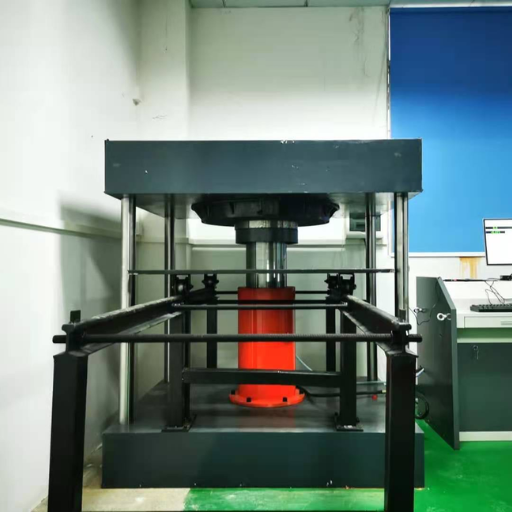
Defect detection has many difficulties to address, such as difference of materials, inconsistent manufacturing weather conditions, and limitations of sensors or imaging equipment. Defect detection sensitivity and specificity thresholding issues further challenges the uniformity of detection standards. Fluctuations of energy in the environment such as light, vibration or any form can create an interference to the detection and accuracy of the sensor(s). Furthermore, subtle defects can be masked, and robust tools are required to diagnose and pinpoint them. Sensing precision vs. speed of detection trade-off is still difficult to achieve, especially when detection is time-sensitive in large quantity production lines. Meeting these goals demand complex algorithms, sophisticated training datasets, and perpetual fine tuning of many system components and parameters.
How Do Environmental Factors Affect Detection?
Detection systems do not function in isolation; environmental parameters have a profound effect on detection accuracy and reliability especially in automated and industrial environments. Temperature, relative humidity, light intensity, and dust particles are examples of contaminants within the air that can affect the function of the sensor and the data to be captured. Some measuring tools may be sensitive to temperature changes as during lower or higher values than usually exercised; this may lead to improper calibration and accuracy drifting. Oversaturation of humidity or tiny particles within the air may obstruct visually based or laser optical sensors which may significantly reduce their resolving power for fine details. Another equally important factor is uniformity and sufficiency of appraisal illumination; unevenly distributed or too dim light may lead to illusions of false positives/negatives in systems using vision.
To address these issues, modern detection systems usually utilize modern compensation methods. These include temperature controls, adaptive lighting, and filters that deal with the obstruction of environmental factors. In addition, Environmental Machine Learning models that analyze data can adjust detection settings in real-time, which strengthens the system. Research shows that these adaptive and flexible systems improve detection, especially in challenging conditions and emphasizing the need for environmental control to sustain detection performance.
How Do Experimental Results Inform Testing Methods?
The guidance and iterative refinement of testing procedures stemming from experimental results is informed by empirical evidence capturing distinct strengths, weaknesses, and gaps for optimization within given frameworks. Through data-driven collection and analysis, these outcomes uncover patterns, anomalies, and performance benchmarks shaping more accurate and dependable testing paradigms. For example, some controlled experiments can determine critical thresholds like sensitivity and specificity which are important for assessing detection system efficacy across multiple settings. In addition, carrying out experimental trials and merging their outputs with sophisticated computational resources, such as data modeling and predictive analytics, empowers more precise simulations of numerous scenarios along with accurate prediction of system behavior. This process ensures that the evolution of testing methodology is responsive to new demands while anchored in empirically-derived data enhancing adaptability and reliability over time.
How Does Classification Work in Manhole Cover Testing?
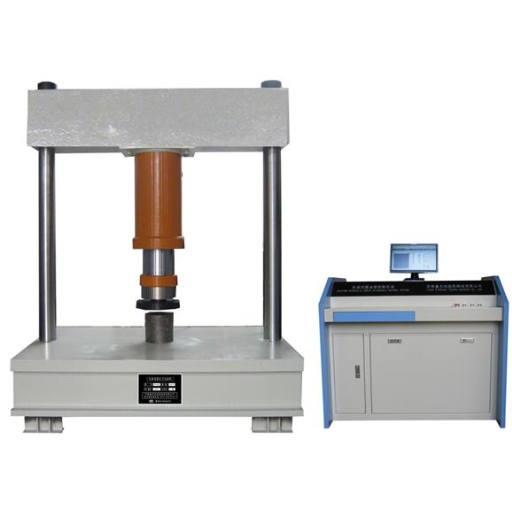
Manhole cover testing involves classifying the covers with respect to their applied mechanics, material structure, and use. Generally, covers are tested for their load-bearing strength and durability with EN 124 or ASTM guidelines. Some testing criteria like static load failure and wear under cyclic stress are measured to ensure compliance with preset requirements. These tests make it possible to ensure that the covers are placed at locations suited to their strength and resilience, which can be traversed by pedestrians, vehicles, or located in dense industrial regions. This enhances the safety and durability of structures.
What Are the Different Types of Manhole Covers?
|
Type of Manhole Cover |
Key Materials |
Strength Level |
Shape Options |
Common Applications |
|---|---|---|---|---|
|
Cast Iron Covers |
Cast iron |
High |
Round, Square |
Roads, Pavements |
|
Ductile Iron Covers |
Ductile iron |
Very High |
Round, Square |
High-traffic areas |
|
Composite Covers |
Resin, Fiber composites |
Medium-High |
Round, Square |
Residential zones |
|
Steel Covers |
Galvanized steel |
Medium |
Round, Square |
Temporary constructions |
|
Concrete Covers |
Reinforced concrete |
Medium-High |
Round, Rectangular |
Low-traffic areas |
|
Plastic Covers |
Polypropylene, Polyethylene |
Low-Medium |
Round, Square |
Gardens, Walkways |
|
Hinged Covers |
Various, Often Cast Iron |
High |
Round |
Utility networks |
|
Locking Covers |
Various, Often Metal |
High |
Round, Square |
Security-sensitive areas |
|
Ventilated Covers |
Various, Often Cast Iron |
High |
Round, Square |
Gas or sewage systems |
How Does High Accuracy in Classification Benefit Infrastructure?
Precision in classification boosts the efficiency, safety, and sustainability of infrastructure. Accurate classification helps in the optimal selection of components which ensures environmental and functional needs are met. Selecting the correct type of manhole cover–hinged, locking, or ventilated–also ensures the site’s load-bearing and usage condition demands are met. This classification minimizes the risk of structural failures and reduces maintenance expenditures over time. Accuracy also assists advanced methodologies such as predictive maintenance systems which require baseline data for monitoring and assessing performance. In addition, accurate classification supports regulatory compliance which is especially important for regulated industries such as utility networks or high traffic areas. Integrating detailed classification into planning and operational frameworks facilitates the construction of infrastructures systems that are adaptable, resilient, and enduring while modernizing advanced needs.
What Are the Key Metrics for Classifying Manhole Covers?
The important characteristics for considering safety, functionality, and durability defines how manhole covers are classified. One of the most important characteristics is the manhole covers, particularly the load-bearing limit. This is further classified under AASHTO or EN 124 classes. Material composition takes into account the durability to corrosion under different environmental conditions. These include cast iron, ductile iron, composite materials, or reinforced concrete.
Square, rectangular, and circular manhole covers have their unique considerations. These include mounting flush to the ground, clearance near passing vehicles, and adhering to local or application specific needs. Round inch covers are common due to ease of manufacture and strength. Other considerations include slip resistance ratings which are crucial for pedestrians especially in icy or wet conditions.
In conclusion, the weight is important as it balances the structural security against dislodgment and the ease of handling the cover during maintenance operations. Following the trends of modern ergonomics and eco-sustainability in design, manufacturing has allowed for lighter composite covers which enhances ease of handling without compromising structural integrity. Meeting these standards increases safety while improving performance, allowing organizations to embrace industry benchmarks.
What Are the Latest Advances in Real-Time Detection?
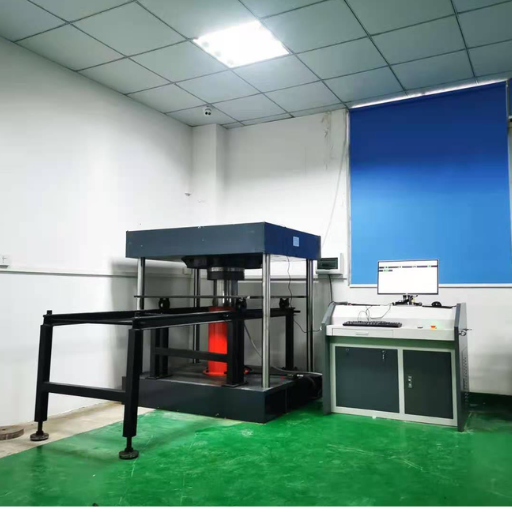
The latest developments in different applications of real-time detection emphasize speed, responsiveness, flexibility, precision, and accuracy. The emergence of multifunctional and miniaturized sensors has enhanced the ability to detect and process changes in the environment in real time. Integration of machine learning algorithms is now being implemented in detection systems to predict events and mitigate automatic triggers of system anomalies. Furthermore, sharing and processing of data using cloud–based systems facilitates quicker and scalable decision-making. These advancements are notable in healthcare where wearable devices enable patients to be monitored constantly and in safety industry where automated systems can identify and prevent safety threats with little human assistance.
How Is Real-Time Detection of Road Manhole Achieved?
Detection of manholes located on streets is done in realtime using a combination of sensor technologies, more sophisticated imaging systems and artificial intelligence. Cameras and LiDAR sensors with a vehicle or with certain infrastructure are able to capture spatial data of roads detailed from the surfaces. This information is processed by machine learning algorithms designed to detect certain patterns and anomalies related to the presence of covers to manholes. These algorithms based on deep learning will differentiate between a manhole cover and a roadside feature with precision.
Moreover, GPS and geospatial mapping technologies can accurately locate manholes for updating digital infrastructure maps. Some systems interlink with centralized databases using the Internet of Things (IoT), enabling municipal authorities to access real-time updates on manhole information. This not only improves the accuracy and safety of autonomous driving systems but also automates reporting for infrastructure maintenance, increasing efficiency in ongoing infrastructure support.
What Innovations Are Being Used in Detection Models?
The implementation of deep learning and multimodal data sources is rapidly advancing detection models. Convolutional neural networks (CNNs) are actively used to assess high-resolution imagery and LiDAR data for precise object recognition. Through the analysis of large datasets, these models enhance their accuracy and adaptability to different environments and scenarios. Furthermore, detection capabilities in complicated urban areas are being enhanced by sensor fusion technologies which incorporate data from cameras, LiDAR, radar and GPS. Providing local processing power, remote servers where solely relied on for data processing in the past. Remote server dependency is becoming less common thanks to edge computing, which offers real-time, low-latency processing. Detection models powered by edge servers are able to fetch data locally instead of relying solely on remote servers. Such methodologies are emerging for a range of sectors, enabling the development of these sophisticated techniques.
How Do Manhole Cover Images Aid in Detection?
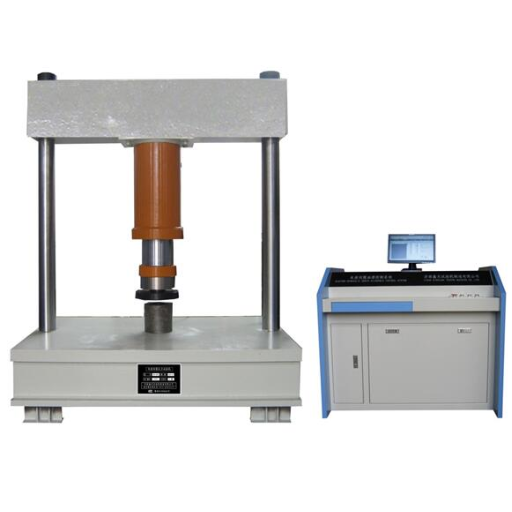
Images of manhole covers aid in detection by helping to locate an area precisely and analyze its condition structurally. This data is critical for mapping out infrastructure, something essential for placement accuracy, and purposeful for detecting possible issues like cracks, misalignment, or obstructions. The identification process can be automated using advanced image recognition models, improving accuracy and efficiency while reducing manual inspections. With such imagery, municipalities and utility companies can take proactive steps to address safety concerns, improve maintenance scheduling, and better manage urban infrastructure.
What Makes a Good Manhole Cover Dataset?
A dataset with a manhole cover image is effective when it has all the needed features, accuracy, and variety. Comprehensive datasets capturing images from different angles, light, and weather conditions provide the best scenario for model training and testing. While capturing a set, having a variety of cover designs, dimensions, surface conditions (new, worn, cracked), material types ensures the model can adapt to different environments.
In addition, the dataset must contain precise metadata which includes geolocation, timestamp, and information about the surroundings. Such context is essential for building machine learning models, providing opportunities for practical applications, including but not limited to predictive maintenance and spatial pattern evaluation. Furthermore, the dataset’s targeting and relevance are also impacted by Annotation Quality, which is defined by the precision at which each image is tagged using either manual or automated annotation systems to deep learning frameworks which facilitate optimal dataset usability for preforming algorithms.
How Are Bounding Boxes Used in Detection?
In computer vision, bounding boxes are essential geometric structures used in object recognition tasks. They are rectangular markers that indicate where an object is found in a given image and provide its roughly estimated dimensions. Encapsulating the objects within the boxes aids machine learning algorithms to build models for associating pixel values with object categories. The identified objects within the bounding boxes can then be stored in respective data silos for classification which involves finding the type of object, along with localization which targets finding the coordinates of the object in the frame.
Bounding boxes are used in modern applications like detection of vehicles in self-driving cars, wildlife monitoring in ecological studies, or facial identification in biometric systems. More modern approaches use bounding boxes in training with algorithms like convolutional neural networks(CNNs) to reduce error in detection and increase accuracy. They could also be combined with temporal data for video examined to enable real-time object tracking and understanding of complex scenes and motions. The measurement and position of the bounding boxes are crucial since those measurement need to be precise to the edges of the objects. This influences the model’s performance in practical scenarios.
Reference Sources
-
Driving Comfort Evaluation for Manhole Covers and Pavement Around Manholes (2019): Driving speed, height differences, longitudinal slope, and manhole subsidence significantly impact driving comfort. The stiffness of manhole covers and tire properties also play a role but to a lesser extent.
-
Prediction of Manhole-Cover Skid-Resistance Performance Using Decision Trees and Regression Analysis (2024): Surface texture, material composition, and environmental conditions are critical factors affecting skid resistance.
The study emphasizes the importance of regular testing and maintenance to ensure safety. -
Analysis of Effects of Manhole Covers on Motorcycle Driver Maneuvers (2013): Placement, material, and surface conditions of manhole covers influence driver safety and maneuverability. Recommendations include optimizing manhole cover design and placement to minimize risks.
Frequently Asked Questions (FAQs)
Q: What is the importance of road anomaly detection in manhole cover testing machines?
A: Road anomaly detection is crucial as it helps in identifying issues related to manhole covers, ensuring safety and reducing the risk of accidents caused by damaged or improperly placed manhole covers on the road.
Q: How do manhole cover detection methods work?
A: Manhole cover detection methods typically utilize advanced imaging techniques and algorithms to analyze images of road manhole covers, allowing for the detection of their presence and condition in real-time.
Q: What are the common techniques used for the detection of road manhole covers?
A: Common techniques include using deep learning models for image data analysis, which can effectively detect road manhole covers and assess their condition based on specific characteristics of the road.
Q: How can the detection of road manhole covers help in damage detection?
A: By accurately detecting road manhole covers, these systems can identify any signs of damage or misalignment, which is vital for timely maintenance and ensuring the integrity of the road infrastructure.
Q: What role does the learning rate play in the manhole cover detection method?
A: The learning rate is a key parameter in training machine learning models for manhole cover detection, affecting how quickly the model learns from image data and improves its accuracy in identifying manhole covers.
Q: Can manhole cover testing machines detect road damage as well?
A: Yes, many manhole cover testing machines are equipped to perform road damage detection by analyzing the surrounding area of manhole covers to identify any anomalies or deterioration in the road surface.
Q: What are the benefits of using real-time object detection in manhole cover assessments?
A: Real-time object detection allows for immediate analysis and reporting of the condition of manhole covers, enabling quick responses to potential hazards and improving overall road safety.
Q: How do manhole covers meet safety standards during road inspections?
A: Manhole covers are inspected using advanced detection techniques to ensure they meet safety standards, focusing on their structural integrity and proper placement on the road to prevent accidents.
Q: What challenges exist in the detection of manhole covers with a deep placement?
A: Detecting manhole covers with deep placements can be challenging due to occlusions and variations in road surface characteristics, but advanced imaging techniques help improve the accuracy of detection.
Q: How do images of road manhole covers contribute to improving detection methods?
A: Images of road manhole covers serve as valuable training data for machine learning models, helping to refine detection algorithms and enhance the accuracy of manhole cover detection in various road conditions.






